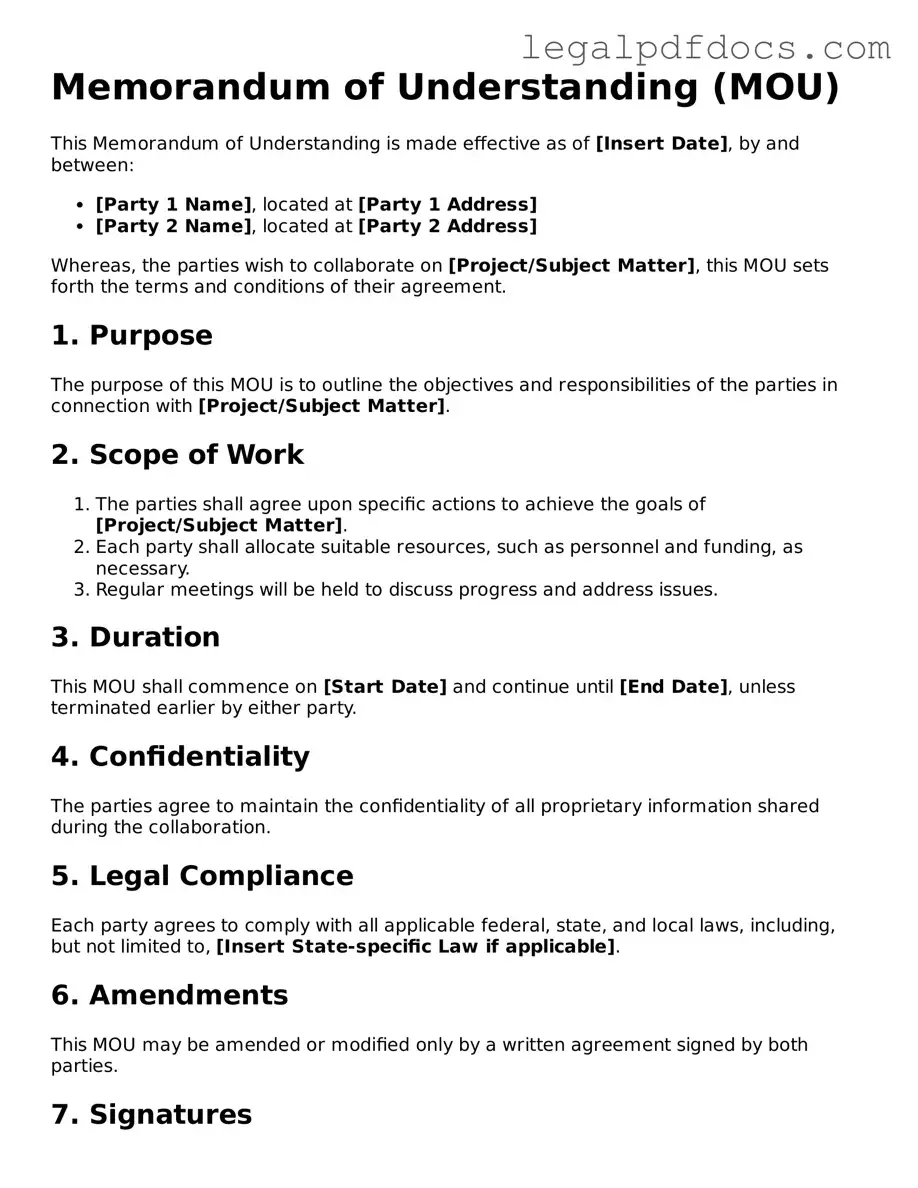Memorandum of Understanding Template
A Memorandum of Understanding (MOU) is a formal agreement between two or more parties that outlines their intentions and responsibilities regarding a specific project or collaboration. This document serves as a foundation for establishing mutual understanding and expectations, ensuring all parties are aligned in their goals. To start your collaboration effectively, consider filling out the MOU form by clicking the button below.
Open Memorandum of Understanding Editor Here
